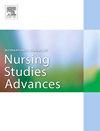Rehabilitation needs, preferences, barriers, and facilitators of individuals with sepsis: a qualitative study
IF 3.1
Q1 NURSING
International Journal of Nursing Studies Advances
Pub Date : 2025-05-02
DOI:10.1016/j.ijnsa.2025.100339
引用次数: 0
Abstract
Purpose
To explore the rehabilitation needs, preferences, barriers, and facilitators of sepsis survivors.
Methods
We performed a qualitative descriptive study. We included English-speaking adults over 18 years old with a past diagnosis of sepsis or a caregiver of an individual with a past diagnosis of sepsis. We conducted semi-structured interviews on Zoom, guided by the COM-B Framework and transcribed interviews verbatim. Two reviewers conducted qualitative content analysis.
Results
We included 22 participants. Participants identified the need for early and continued rehabilitation, including support for physical and cognitive health. They described barriers related to social isolation, finances, and lack of information on and accessibility to rehabilitation services. Participants reported that they preferred to participate in rehabilitation that included peer support, education for themselves and caregivers, and personalized services. Interview findings underscore the need to increase the accessibility of rehabilitation resources and the knowledge of sepsis survivors and their caregivers on the condition and the benefits of rehabilitation.
Conclusion
We identified rehabilitation needs, preferences, barriers, and facilitators necessary to better support sepsis survivors in their recovery process. Future research should focus on tailoring strategies to improve the opportunity for rehabilitation for sepsis survivors and increasing the knowledge of sepsis in survivors and their caregivers to maximize participation in rehabilitation for individuals with sepsis.
脓毒症患者的康复需要、偏好、障碍和促进因素:一项定性研究
目的探讨脓毒症幸存者的康复需求、偏好、障碍和促进因素。方法采用定性描述性研究。我们纳入了过去诊断为败血症的18岁以上说英语的成年人或过去诊断为败血症的个体的照顾者。在COM-B框架的指导下,我们在Zoom上进行了半结构化的采访,并逐字记录了采访内容。两名审稿人进行了定性内容分析。结果共纳入22名受试者。与会者确定了早期和持续康复的必要性,包括对身体和认知健康的支持。他们描述了与社会隔离、财政状况以及缺乏康复服务信息和获得康复服务的机会有关的障碍。参与者报告说,他们更喜欢参与包括同伴支持、对自己和照顾者的教育以及个性化服务的康复。访谈结果强调需要增加康复资源的可及性,以及脓毒症幸存者及其护理人员对病情和康复益处的了解。结论:我们确定了康复需求、偏好、障碍和促进因素,以更好地支持败血症幸存者的康复过程。未来的研究应侧重于定制策略,以提高脓毒症幸存者的康复机会,并增加幸存者及其护理人员对脓毒症的了解,以最大限度地参与脓毒症患者的康复。
本文章由计算机程序翻译,如有差异,请以英文原文为准。
求助全文
约1分钟内获得全文
求助全文
来源期刊

International Journal of Nursing Studies Advances
Nursing-General Nursing
CiteScore
5.80
自引率
0.00%
发文量
45
审稿时长
81 days
 求助内容:
求助内容: 应助结果提醒方式:
应助结果提醒方式:


